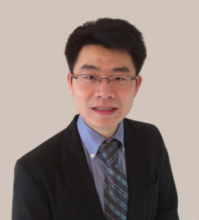CEE Seminar: Additive Manufacturing of Active Materials and Structures

Assistant Professor
Civil & Environmental Engineering
University of Southern California
Abstract: Active materials and structures, with the ability to change their configurations, forms or properties in response to remote physical control (temperature, electromagnetic field and light), have broad engineering applications, ranging from adaptive buildings, deployable structures and robotics to flexible electronics. Despite the great potential, manufacturing the active materials into desirable 3-D structures is a long-lasting challenging. Here, aided with a state-of-the-art multimaterial stereolithography system, we present our recent research progress in additive manufacturing of 3-D active structures that can be activated to achieve desirable functions with temperature variations and magnetic fields. First, we demonstrate manufacturing of 3-D multimaterial composite lattices that exhibit significant negative thermal expansions (NTEs) in three directions and over a large range of temperature variations. The lattice NTE is realized by two levels of composite design: particle reinforcement on the material level, and dissimilar beam interactions on the structural level. The experimentally observed NTEs are consistent with theoretical and computational models. These NTE structures are very appealing in applications where the mismatch thermal stress should be carefully managed, such as thermal gaps in buildings and bridges, dental filling, microchip devices, adhesive fillers and high-precision optical or mechanical devices. Second, we demonstrate manufacturing of 3-D active elastomer lattices that can be largely folded and unfolded by the external magnetic fields. The folding is realized through magnetically induced sequential buckling of the elastomer lattices. Scaling theory and analytical model are used to explain the magnetically induced buckling. These magnetically active structures are potentially useful for aerospace deployable structure, soft robotics and active damping devices.
Speaker Bio: Qiming Wang is an assistant professor in civil and environmental engineering at the University of Southern California. He earneed a doctorate in mechanical engineering and materials science from Duke University. Then, he moved to Massachusetts Institute of Technology for one-year of postdoctoral training. He won the MRS Graduate Student Award, ASME Best Student Paper Award, NSF-PACAM Fellowship, NIH-Duke Lew Pre-doctoral Fellowship and Kewaunee Student Achievement Award. His recent research interests are focused on the manufacture and mechanics of active materials for applications in lightweight structures, smart structures, water treatment and antifouling. His research was widely reported by Discovery, Washington Post, BBC Focus, NBC News, Wall Street Journal, Physics Today, NSF News, Duke News and MIT News. More information can be found at www-bcf.usc.edu/~qimingw.
Share
Download
Upcoming Events
-
CEE Ph.D. Defense Announcement: Machine Learning and Remote Sensing for Environmental Modeling - From Large-Scale Streamflow Forecasting to Malaria Risk Mapping
-
CBE Special Seminar: Operando Electrochemical Methods at Dynamic Energy Materials Interfaces
-
CEE Ph.D. Defense Announcement: Release, Transport and Fate of Per- and Polyfluoroalkyl Substances (PFAS) in Urban Watersheds
-
MSE 298 Seminar: Mechano-Electrochemical Phenomena at Ceramic Electrolyte Interfaces
-
MSE 298 Seminar: Innovation In Materials Science - An Industrial R&D Perspective
